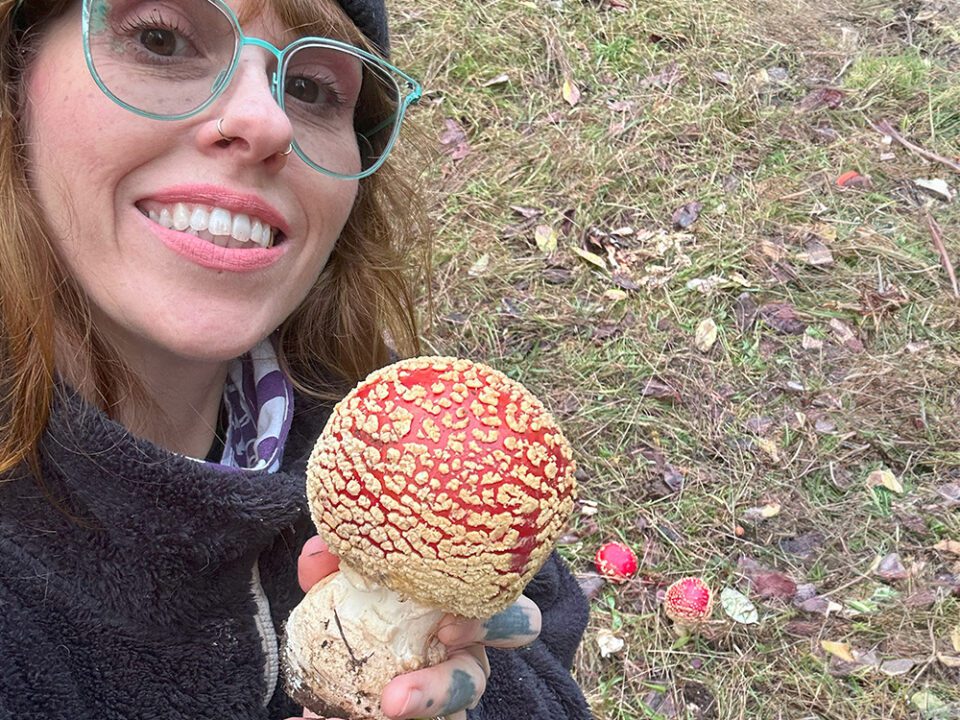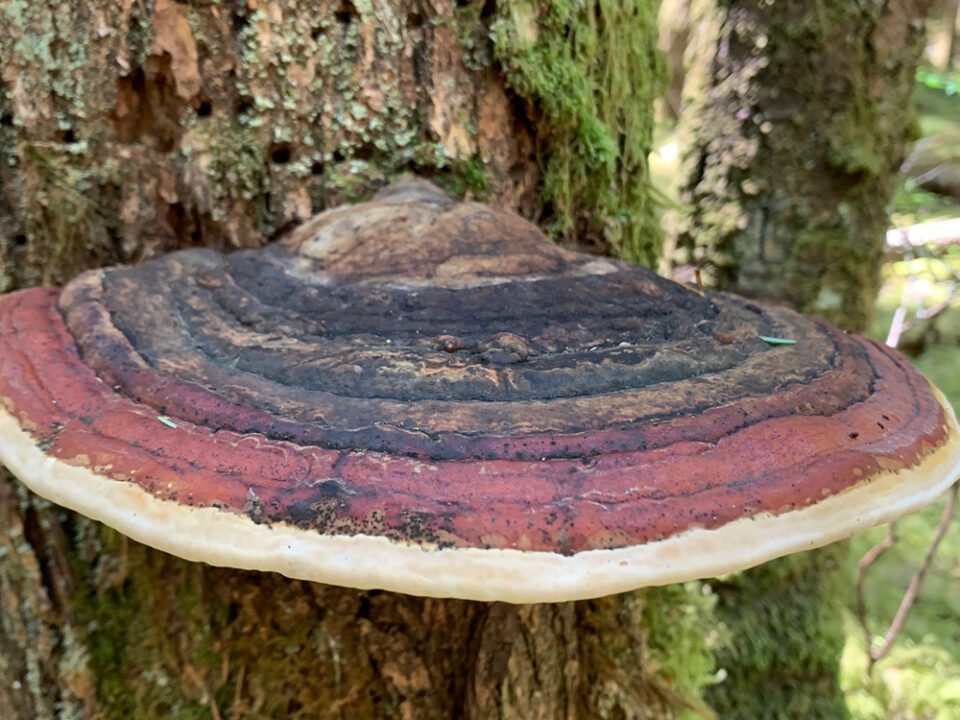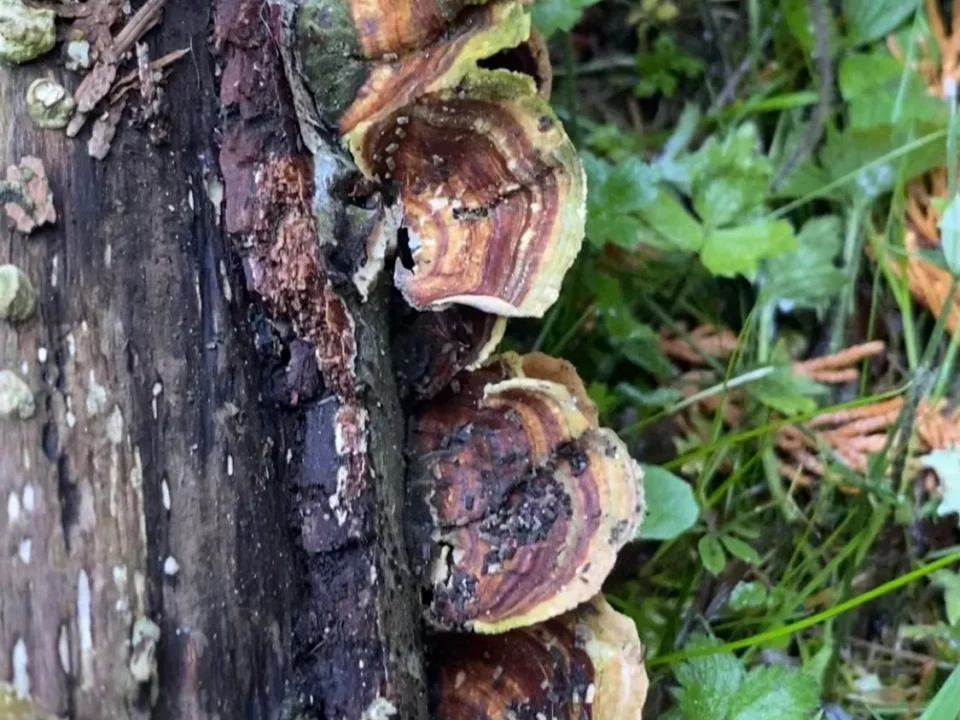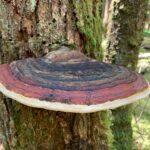
RED BELTED POLYPORE
September 5, 2024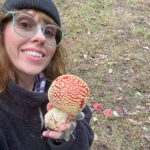
AMANITA MUSCARIA: A FINE LINE BETWEEN POISON & MEDICINE
October 26, 2024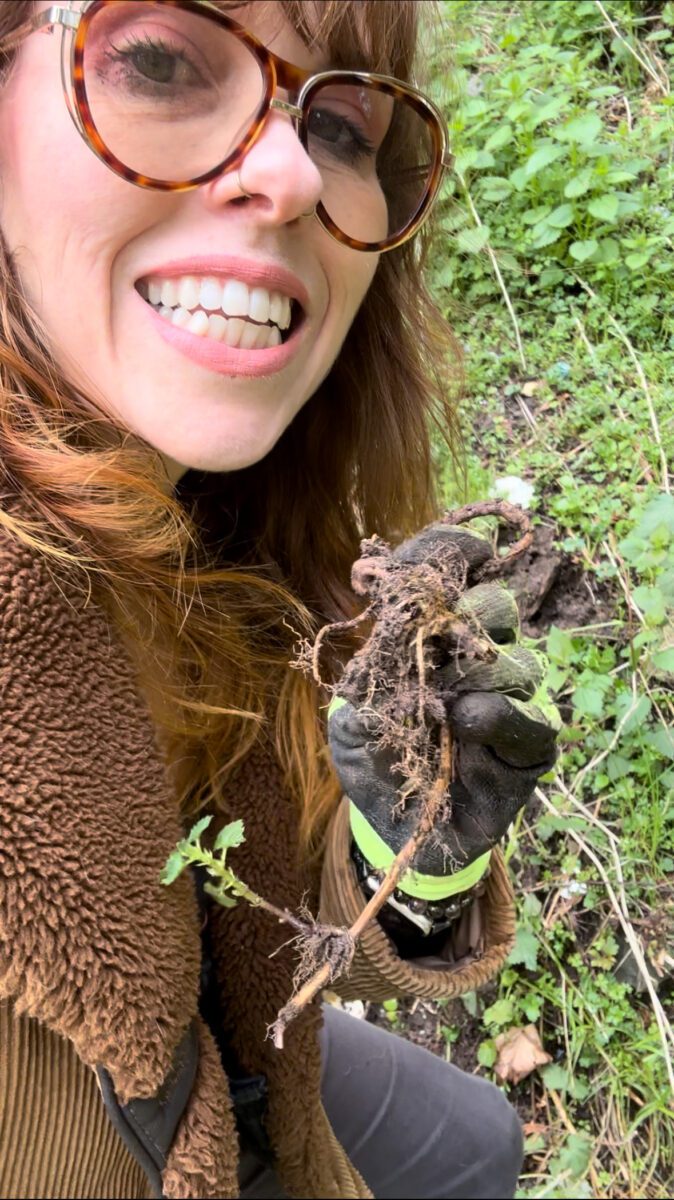
Hi friends,
Let’s talk about one of my all time favorite and natures ultimate power plant. Stinging nettle. Yea the same one that most people spend their life avoiding and usually have a childhood horror story that predeceases that practice. That plant you may have cursed on a number of hikes is about to surprise you with its many advantages. So let’s dive in to its nutritional value, how to ID it when to pick it, and the medicinal value in its leaves and roots.
Stinging nettles sciency name is Urtica Dioica, it has been used many ways in many culture for many centuries. In can and will grow almost anywhere, meadows, forests, roadsides and where you would ride your bike as a child in the summer wearing shorts. Although nettle can leave uncomfortable stings its slo one of the worlds most nutritionally dense superfoods.
Nutritional Value of Stinging Nettle (100g raw)
Calories: 47 kcal
Protein: 2.7 grams [up to 25% protein by weight when died]
Carbohydrates: 7.5 grams
Fiber: 6.0 grams
Fat: 0.1 gram
Vitamin A: supports eye health
Vitamin C: 33.3 mg Boosts immune response
Vitamin K: supports blood clotting
Calcium: 481 mg for bone health
Iron: 1.6 mg red blood cell production
Magnesium: 86mg supports muscle and nerve function
Potassium: 34mg helps maintain blood pressure balance
That’s not all, its also packed with antioxidants, that can help reduce inflammation and oxidative stress. So yeah, if you’re looking for s nutritional boost but also want to foraged natural foods nettle may be your new bestie. It is often consumed the same way one would use spinach but can also be found in Teas, beauty products, salves, and in a tinctures like I have available [here]
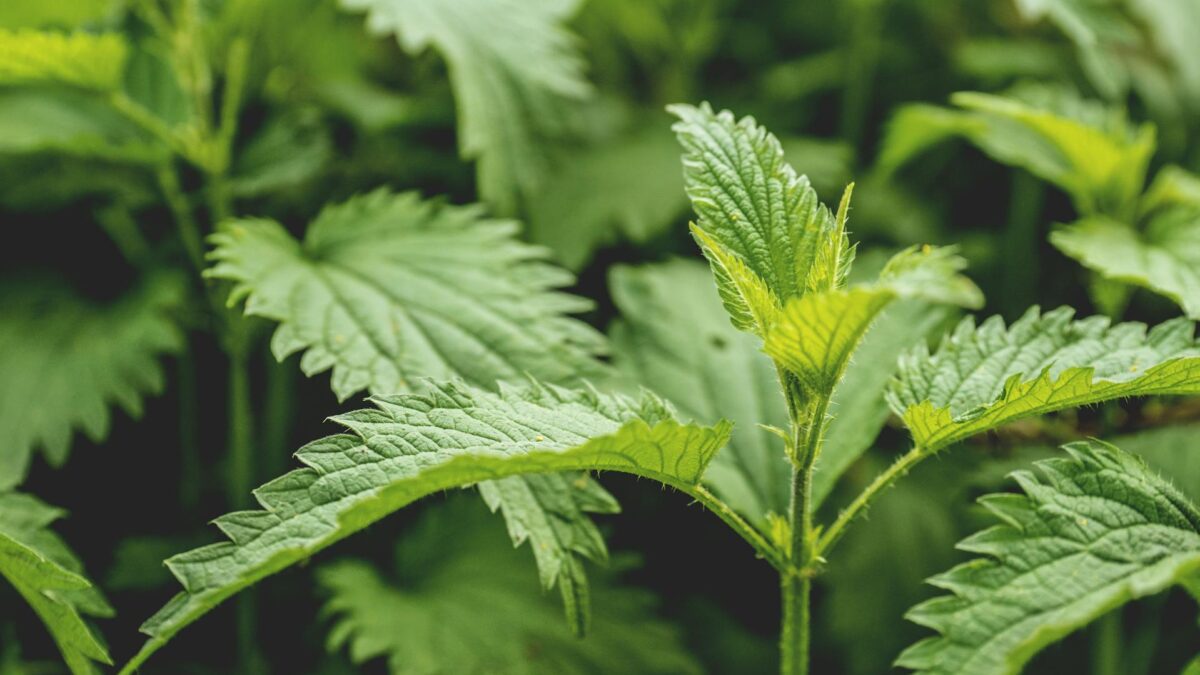
How to Identify Stinging Nettles
Knowing how to spot stinging nettle is a crucial skill to keep in your arsenal.
Leaves: Heart shaped with serrated edges and covered on the underside with fine and angry defense hairs. The leaves grow opposite on the stem
Stem: Square shaped like mint but much more aggressive, if you grab the stem you will likely feel it for a day or more.
Height: She grows up o 7ft in ideal conditions buy can also be as little as two feet in some cases.
Flowers: more like seed pods really, they hang from the stems like tiny grapes shortly after the plant is mature, usually by mid summer-fall
Root: they grow off of a yellowish rhizome which is a long runner root that connects the nearby plants.
When to Harvest
The young tender leaves and tops are the best to use in cuisine as the flavor and mouthfeel are best at this stage, for this you want to harvest in the spring. If you are collecting for teas and medicines collecting the leaves is fine at any stage but I try to do this before they start to seed.If your plan is to collect the rhizome I would do this in late fall or early spring before or just as the new shoots arrive as they will have the most energy stored at this time.
Medicinal benefits of the leaves:
Nettle is an incredible an essential thing to include in any apothecary.
Anti inflammatory: Nettle is loaded with anti-inflammatory properties and can be effective for arthritis, joint pain,and any general inflammation.
Allergy relief: Nettle is a natural antihistamine, which makes it a must for hayfever.
Iron booster: if you have low iron or are anemic adding nettle to your diet could be very beneficial as its loaded with non heme iron
Skin care: nettle is helpful to people with eczema acne and psoriasis, it can be applied as a poultice or added to beauty supplies.
The power of the root:
Many people only ever use the leaves, but the root has so many benefits and studies to back it up it should not be ignored.
PCOS relief:
Stinging nettle’s adaptogenic effects on the endocrine system make it a natural ally for conditions like PCOS (Polycystic Ovary Syndrome). Adaptogens are plants that help the body resist stressors and support hormonal equilibrium. Nettle’s benefits for PCOS come from several key mechanisms:
- Anti-androgenic Effects: Nettle root has been shown to inhibit the activity of certain enzymes that convert testosterone into its more active form, DHT (dihydrotestosterone). High DHT levels are linked to symptoms like excess hair growth and acne in women with PCOS. It is increasingly recognized for its potential in managing androgenic alopecia, commonly known as pattern hair loss. This is largely due to its ability to inhibit the enzyme 5-alpha-reductase, which converts testosterone into dihydrotestosterone (DHT)—a key factor in hair follicle miniaturization and subsequent hair loss. A study published in Journal of Translational Medicine demonstrated that nettle root contains bioactive compounds like beta-sitosterol and lignans, which help block the formation of DHT, thereby slowing the progression of hair loss. Additionally, a 2014 study in Planta Medica confirmed that nettle root extract had a significant inhibitory effect on 5-alpha-reductase activity, suggesting its potential as a natural treatment for androgenic alopecia. Another 2016 study published in Phytotherapy Research highlighted the anti-inflammatory properties of nettle, which may further contribute to improved scalp health and hair regrowth.
- Blood Sugar Regulation: Nettle has been found to help regulate blood sugar and improve insulin sensitivity, which is crucial for women with PCOS who often face insulin resistance .
- Stress and Adrenal Support: Nettle acts as a gentle adaptogen, supporting adrenal function and helping the body adapt to physical and emotional stress, which in turn supports better hormonal balance .
A Prostate Health and Erection Hero
Benign Prostatic Hyperplasia (BPH) and erectile dysfunction (ED) are closely linked, particularly in the aging . BPH, an enlargement of the prostate gland, affects nearly 50% of of people with the gland by age 50 and up to 90% of them by age 80, with many also experiencing ED. Studies suggest that about 70% of people with moderate to severe BPH symptoms report ED. This connection stems from shared risk factors like age, inflammation, and cardiovascular health, as well as the mechanical impact of an enlarged prostate on urinary and sexual function. Treatments for BPH, such as alpha-blockers and 5-alpha-reductase inhibitors, can sometimes worsen erectile function. Research published in The Journal of Sexual Medicine found that while 5-alpha-reductase inhibitors reduce prostate size and alleviate urinary symptoms, they may negatively impact libido and erectile function.
Stinging nettle root (Urtica dioica) offers a natural alternative for addressing both BPH and ED. Studies show that nettle root inhibits 5-alpha-reductase, the enzyme responsible for converting testosterone into dihydrotestosterone (DHT), which plays a role in prostate enlargement. A 2007 study published in Planta Medica demonstrated that nettle root can reduce prostate cell proliferation, helping to alleviate urinary symptoms associated with BPH. Additionally, by decreasing DHT levels, nettle root may not only support prostate health but also mitigate the negative impact of BPH on erectile function. A study in Phytotherapy Research highlighted that nettle’s anti-inflammatory properties also contribute to better prostate and sexual health, reducing inflammation-related issues that exacerbate both BPH and ED.
How to Use Nettle
Once you’ve harvested or bought your nettle, there are many ways to add it to your daily regime:
- Tea: Dry the leaves and brew them into a tea. It’s a gentle, daily tonic that supports overall health, from reducing inflammation to boosting energy levels.
- Tincture: Nettle tinctures (like the one I make!) concentrate all the benefits of the plant into easy-to-take an easily bio available drops. Whether it’s hormonal balance or prostate health, and a happy little solider you’re after, regular use of nettle tincture can do wonders.
- Culinary Uses: Blanch the leaves to remove the sting, and you can use nettle just like spinach—toss it into soups, stews, or smoothies.
Ready to Try Nettle for Yourself?
If you’re intrigued by everything stinging nettle has to offer, I’ve got you covered. Whether you’re looking for hormonal balance, support for PCOS, or help with prostate health, my handcrafted nettle tincture is all foraged by me and made with the highest-quality, sustainably sourced plants . Click [here] to try it for yourself and experience the benefits of this powerful herb firsthand.
Your wellness journey starts with a single step—or in this case, a single drop.
References:
- Journal of Ethnopharmacology, 2000. Nutritional analysis of stinging nettle (Urtica dioica).
- Aydın, A., et al. (2015). “The effects of nettle (Urtica dioica) on antioxidant capacity.” Phytotherapy Research.
- Heghes, S. C., et al. (2020). “Nutritional and therapeutic aspects of stinging nettle.” Fitoterapia.
- Randall, R. E., et al. (1999). “Nutritional content of stinging nettle.” Journal of Food Composition and Analysis.
- Combest, W., et al. (2017). “The protein profile of Urtica dioica.” Journal of Plant Nutrition.
- Chrubasik, J. E., et al. (2007). “Anti-inflammatory properties of stinging nettle.” Planta Medica.
- Sirotkin, A. V., et al. (2019). “The hormonal effects of nettle root.” Journal of Andrology.
- Mousavi, S. M., et al. (2020). “Nettle’s effects on blood sugar regulation.” Phytotherapy Research.
- Huang, W. C., et al. (2019). “Nettle’s adaptogenic effects on adrenal glands.” Journal of Endocrinology.
- Safarinejad, M. R. (2005). “Nettle root’s impact on BPH symptoms.” Urology.
- Journal of Urology, 2007. Study on nettle root’s role in improving erectile function.
- Schottner, M., et al. (1995). “Nettle’s anti-inflammatory mechanisms.” Journal of Ethnopharmacology.
- Journal of Food Chemistry, 2018. Iron bioavailability in nettle.
- Mittman, P. (1990). “Nettle for allergic rhinitis.” Phytotherapy Research.
- Roehrborn, C. G., et al. (2005). “The influence of baseline parameters on changes in international index of erectile function domains in men treated for benign prostatic hyperplasia with tadalafil or placebo.” Journal of Urology, 174(4), 1399-1404.
- McVary, K. T., et al. (2007). “Erectile dysfunction and lower urinary tract symptoms secondary to benign prostatic hyperplasia (LUTS/BPH): the role of lifestyle modifications and medical treatment.” European Urology, 51(3), 869-881.
- Kaplan, S. A., et al. (2006). “Effects of alpha-blocker therapy on erectile function in men with lower urinary tract symptoms associated with benign prostatic hyperplasia.” Urology, 68(1), 123-127.
- Gacci, M., et al. (2011). “Impact of medical treatments for benign prostatic hyperplasia on sexual function.” The Journal of Sexual Medicine, 8(3), 928-938.
- Safarinejad, M. R. (2005). “Urtica dioica for treatment of benign prostatic hyperplasia: A prospective, randomized, double-blind, placebo-controlled, crossover study.” Journal of Herbal Pharmacotherapy, 5(4), 1-11.
- Chrubasik, J. E., et al. (2007). “The clinical effectiveness of Urtica dioica in the treatment of benign prostatic hyperplasia: A systematic review.” Planta Medica, 73(4), 297-304.
- Wójcik, A., et al. (2016). “The role of nettle extract in the treatment of androgenic alopecia.” Phytotherapy Research, 30(3), 484-490.

